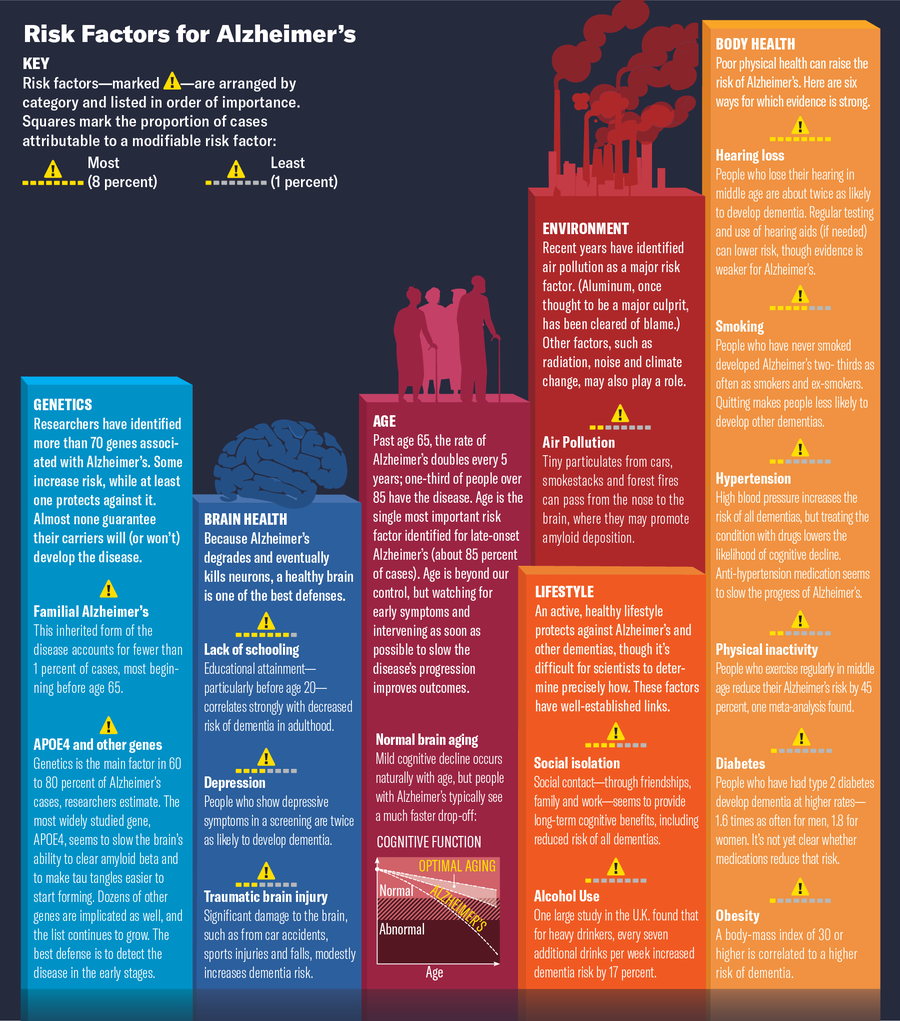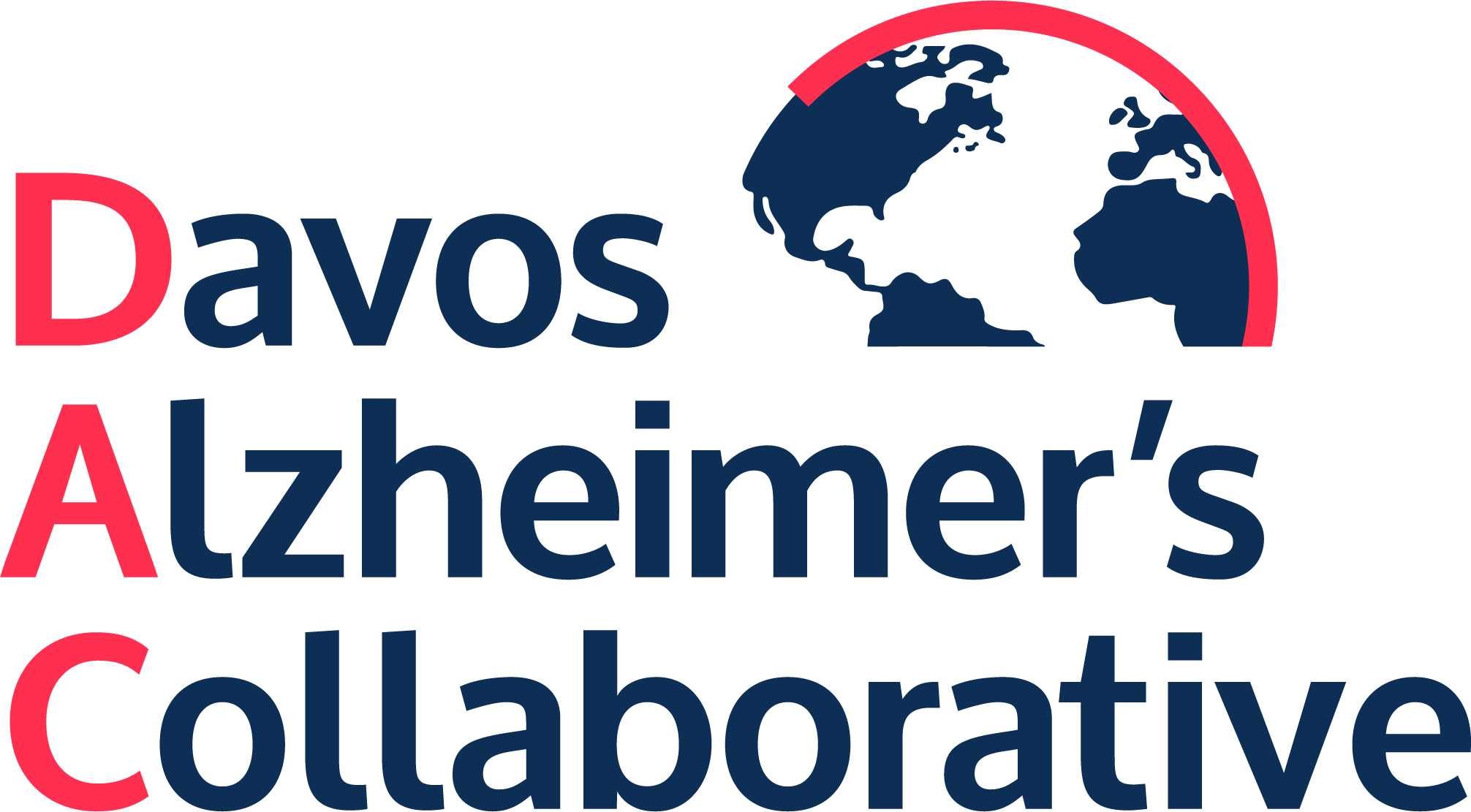Scientists are still learning about the causes of Alzheimer’s, but most agree that many factors contribute to an individual’s risk of getting the disease. Some risk factors, such as age and genes, are inescapable. Others can be modified with lifestyle changes, such as exercise and nutrition—in one study, participants were able to reduce their risk of getting Alzheimer’s by 60 percent. Although most risk studies focus on dementia in general, here are important findings about the known risk factors as they apply to Alzheimer’s.

Katie Peek and Joelle Bolt; Sources: Risk factor relative importance: G. Livingston et al., The Lancet, 396, 413 (2020); normal brain aging: “Alzheimer’s Disease and Other Dementias,” Mayo Clinic, 2020
This article is part of The New Age of Alzheimer’s, a special report on the advances fueling hope for ending this devastating disease.



